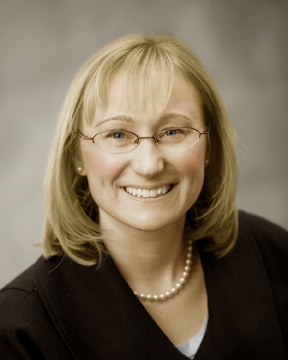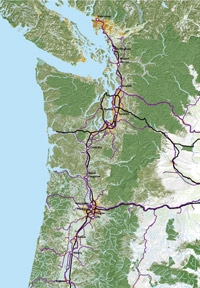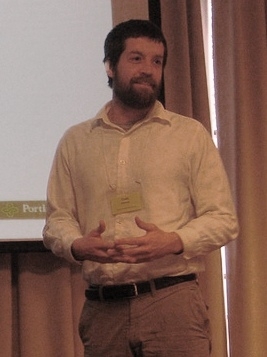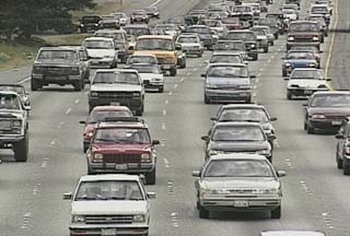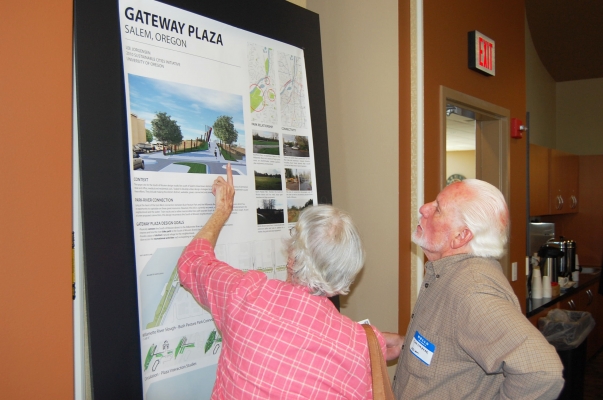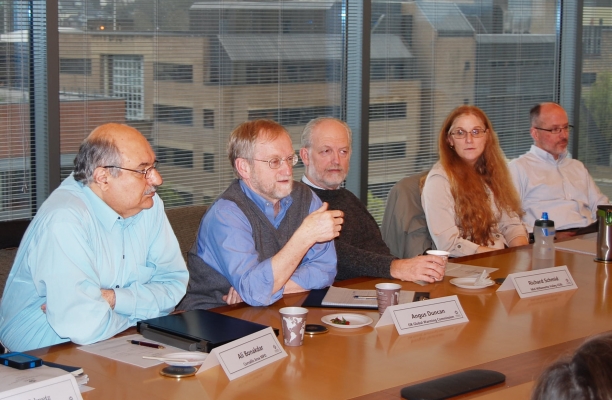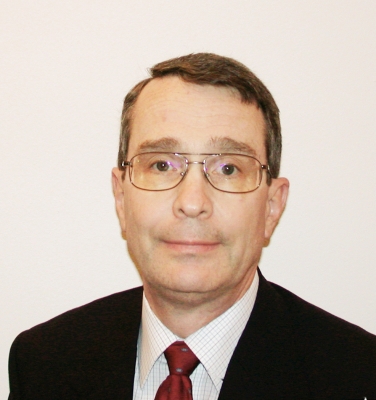The U.S. House of Representatives Subcommittee on Technology and Innovation heard testimony earlier this month crafted by OTREC regarding continued funding for transportation research and University Transportation Centers.
On June 14, Lynn Peterson, Sustainable Communities and Transportation Policy Advisor to Governor John Kitzhaber delivered testimony (Read The Full Statement Here) prepared by OTREC, the Oregon Department of Transportation and others on how transportation research can maximize the return on investment of taxpayer dollars when it comes to transportation projects. The testimony was given to ensure continued federal support and funding for transportation research in the state of Oregon. In particular, Peterson requested continued support of University Transportation Centers (UTCs), like OTREC.
“The next transportation authorization needs to continue to provide a means of addressing the needs of applied and advanced research which is regional and national in scope,” Peterson said in the testimony. “In Oregon, we have developed a very successful model of collaboration between our research universities and between (OTREC), (ODOT) and local governments. This collaboration allows us to stretch our resources further and leverage our expertise and funding across our institutions, and ensures that research is able to be put into...
Read morePortland State University students working with students at the University of Washington have completed a fifth volume report on the possibilities of High Speed Rail in the Northwest.
Working with Ethan Seltzer of Portland State and Daniel Carlson of the University of Washington, the students have spent the past months traveling between Seattle and Portland, attending workshops, and researching the impacts and benefits of High Speed Rail development. OTREC helped the students and professors put together several charettes in Portland and Seattle, and also provided funds for student travel between cities, according to John MacArthur, OTREC Sustainable Transportation Program Manager.
The resulting report, Ecolopolis 5.0: High Speed Rail in Cascadia (Read The Full Report Here), gives an in-depth look at how investment in High Speed Rail could tie together the region from Eugene all the way to Vancouver B.C. Carlson, senior lecturer of public affairs in the Evans School of Public Affairs at UW, said the report goes into more detail than most government research into High Speed Rail ever has before.
“We looked at the impacts (of High Speed Rail) in a broader range than most Departments of Transportation would look at,” Carlson said. “We wanted to understand the impact of development around stations, commerce exchange, and the environmental impact...
Read moreWhile the national parks system may have some of the most natural areas in America, there’s nothing natural about how most Americans travel through them: by car.
Todd Johnson, an OTREC graduate research assistant, is hoping to change that for at least one state park. The Eno Transportation Foundation recently chose Johnson for a year-long assignment to find ways to reduce traffic congestion at Arches National Park near Moab, UT. Every year, Eno puts out five assignments throughout the country to improve transportation at national parks and monuments.
Johnson, a Master of Science student in civil and environmental engineering at Portland State University, previously worked as a transportation interpreter at Rock Mountain National Park, encouraging people to take a shuttle service rather than driving. He has a similar goal for his stint at Arches.
“We want to get people out of their cars,” Johnson said. “Right now when the parking lots fill up, people park on the side of the road, creating a safety hazard and diminishing the beauty of the park. I will help with implementing solutions to deal with congestion using (Intelligent Transportation Systems) and social media.”
Johnson, an avid cyclist, will also be looking at encouraging alternative forms of transportation through Arches. The park is looking to construct more hiking and biking trails to prevent visitors from driving from one attraction to another, Johnson said. Currently, the park’s roads...
Read moreEvery day, trucks travel in, out and through Portland delivering the goods that make the city and region’s economy thrive. But urban freight traffic in the Portland metro area has become increasingly congested and unreliable, leading to longer travel times, fewer goods being distributed and more greenhouse gases being emitted. OTREC researchers have worked with commercial vehicle GPS data and freeway traffic sensor data to understand the impact of urban congestion on commercial vehicle fleets and what can be done to reduce congestion.
In “Algorithms to Quantify the Impacts of Congestion on Time-Dependent Real-World Urban Freight Distribution Networks” (Read Paper Here) and “The Impacts of Congestion on Time-definitive Urban Freight Distribution Networks CO2 Emission Levels” (Read Paper Here), OTREC researcher Miguel Figliozzi and his team attempted to quantify and measure the impacts of congestion on freight from a business, as well as environmental perspective. The project team combined time-dependent algorithms, real-world traffic data, and open source software Google Maps to...
Every year, graduate and undergraduate students from Portland State University’s Toulan School of Urban Studies and Planning perform projects to aid urban planning efforts in local communities. On Tuesday, May 31, several students from PSU’s Master of Urban and Regional Planning (MURP) program took to the podium to present what they had accomplished after nearly six months of hard work.
When Amy Hesse, a graduate student in the MURP program, traveled to Redmond to learn more about efforts to encourage bicycling in the eastern Oregon community, she found plenty of people interested biking. But she also found that many were not doing so because they felt unsafe. Hesse, along with students April Cutter, Reza Farhoodi and Spencer Williams, developed a project called B-Spoke which sought to create a bicycle refinement plan for the city of Redmond.
“Our goal was to build off the city’s existing transportation system plan by identifying assets and barriers to increased ridership,” said Hesse. “People told me, ‘I don’t feel safe’ and we looked for new ways to overcome that. It wasn’t so much telling (Redmond locals) what they should do, but seeing what we could learn from them.”
While Redmond had many assets to cycling, including existing bike trail systems, a lack of east-west connectivity and dangerous highway crossings prevented many from biking more frequently, or at all, outside of recreation. Women were the gender with the most interest in cycling, but...
Read moreThe Oregon Transportation Research and Education Consortium would like to congratulate two of its affiliated students who took home hefty scholarships this past week from the Women’s Transportation Seminar (WTS).
Kristi Currans of Portland State University and Jessica Bloomfield of the University of Oregon were both awarded scholarships at a May 26 dinner at Wilf’s in Union Station. The Women’s Transportation Seminar was established by the federal government with the goal of transforming the transportation industry through the advancement of women. Overall, WTS awarded $15,500 in scholarships this year to women pursuing higher education and careers in transportation.
Currans, a graduate Civil Engineering student at PSU, took home a $3,500 Graduate Scholarship. She holds an undergraduate degree in Civil Engineering from Oregon State University, where she was named Student of the Year in 2010. Currently, Curran is working with travel demand modeling as part of a workforce training program between PSU and the Oregon Department of Transportation. Active in the American Society of Civil Engineers,
.bmp) the Institute of Transportation Engineers and Students in Transportation Engineering, she would like...
the Institute of Transportation Engineers and Students in Transportation Engineering, she would like...
If the posters lining the wall showed how visionary the Sustainable City Year model can be, the Salem city officials attending the May 20 reception testified how practical it can be as well. The reception recapped the work of the second Sustainable City Year, now drawing to a close.
Sustainable City Year is a program of the Sustainable Cities Initiative, one of three OTREC initiatives. In the program, 500 students on two campuses worked on 16 projects to help Salem meet sustainability goals.
Although work continues in Salem and at the University of Oregon and Portland State University, May 20 was an opportunity to thank the participants and punctuate a second successfully year, following the inaugural efforts in Gresham, Ore. Next year’s Sustainable City Year will focus on Springfield, Ore.
Linda Norris, Salem’s city manager, couldn’t say enough about the contributions the program made to her city. Students in 29 classes on the two campuses put in 80,000 hours of time. Sustainable City Year’s choosing Salem was like magic, Norris said.
The students didn’t just treat their work as a hypothetical problem to solve; they poured themselves into the projects and the goals behind them. “When we heard how seriously they were taking this, and how much they cared about this community, it really did give me goose bumps,” Norris said.
Salem did not have money to get many of the projects started without Sustainable City Year, Norris said. But now that...
Read moreEven as complex visual representations of data become common, many people still don’t understand what land-use and transportation modelers do. In April, state and local planning directors met to address that and other issues they’ll increasingly face in the coming years. The Oregon Modeling Collaborative convened the Oregon Transportation Policy Forum for guidance in developing the tools agencies will need and to keep agencies talking about transportation issues.
Giving a complex topic such as global warming the video game treatment could make it easier to grasp, said Angus Duncan of the Oregon Global Warming Commission. “I have yearned for something that’s the greenhouse gas equivalent of a ‘Sim City,’ “ Duncan said at the forum. “Something simple enough that kids can play with it, but something you can use for communication.”
Developers have gotten much better at representing data, said Tom Schwetz, director of development services for Lane Transit District, but leaps in handheld devices such as iPhones have raised expectations still higher. Transportation models are getting more complex and, at the same time, people are demanding their information quicker and quicker.
Modelers struggle, Schwetz said, both because people don’t understand the complexity of the models and because modelers themselves don’t explain themselves clearly. The models then become easier to attack than to defend. “There is a credibility issue,” he said. “It’s too easy to...
Read moreBy one count, nearly one in five crashes on city streets is related to driveways. Despite this, driveway design has attracted little attention in transportation circles until recently.
Jim Gattis wants to change this. Gattis, a University of Arkansas engineering professor, shares some of the lessons of his research in a visit to Oregon May 16 and 17 as an OTREC visiting scholar.
While the needs of different road users sometimes conflict, a smart design often can accommodate all users without much, or any, inconvenience. “If you look to design guidelines years ago, they were assessed solely from the needs of automobile drivers,” Gattis said. “But pedestrians and bicyclists also have to cross driveways. And pedestrians with disabilities of sight, or who are in wheelchairs, have their own problems, many of which can be easily remedied with alternative practices that are no more onerous to design or construct.”
No one sets out to design a bad driveway. “I would guess that somebody just didn’t think about it; it didn’t cross anyone’s mind,” Gattis said. "Design practices that make the roadway easier for drivers, bicyclists and pedestrians to navigate fall into the category of observing how traffic operates and applying common sense to it.”
Gattis...
Read more
